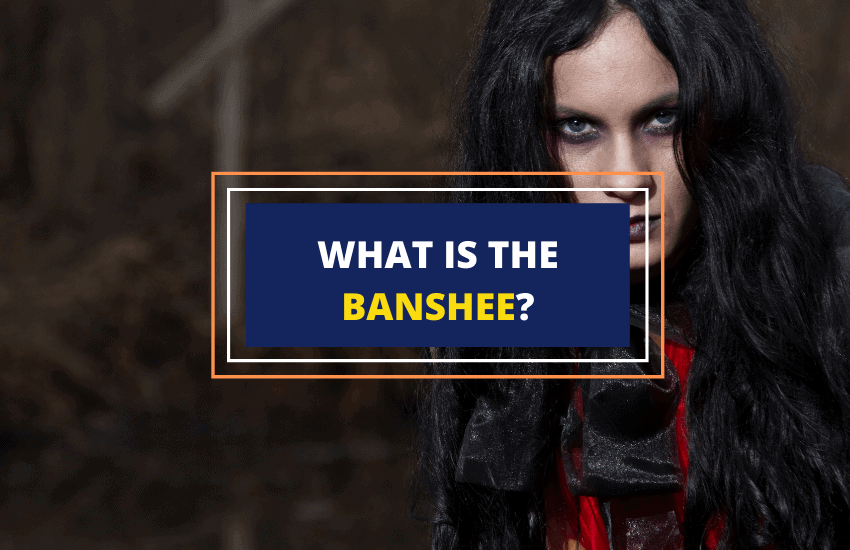
Table of Contents
The banshees are one of the most famous Celtic mythological beings in all of Irish mythology today. They – or variations and interpretations of them – can be seen in countless contemporary books, movies, and other works of fiction and culture. Even today, the phrase ‘screaming like a banshee’ is often used. But what is the origin of the banshee myth and what did these terrifying creatures really represent?
Who Are The Banshee?
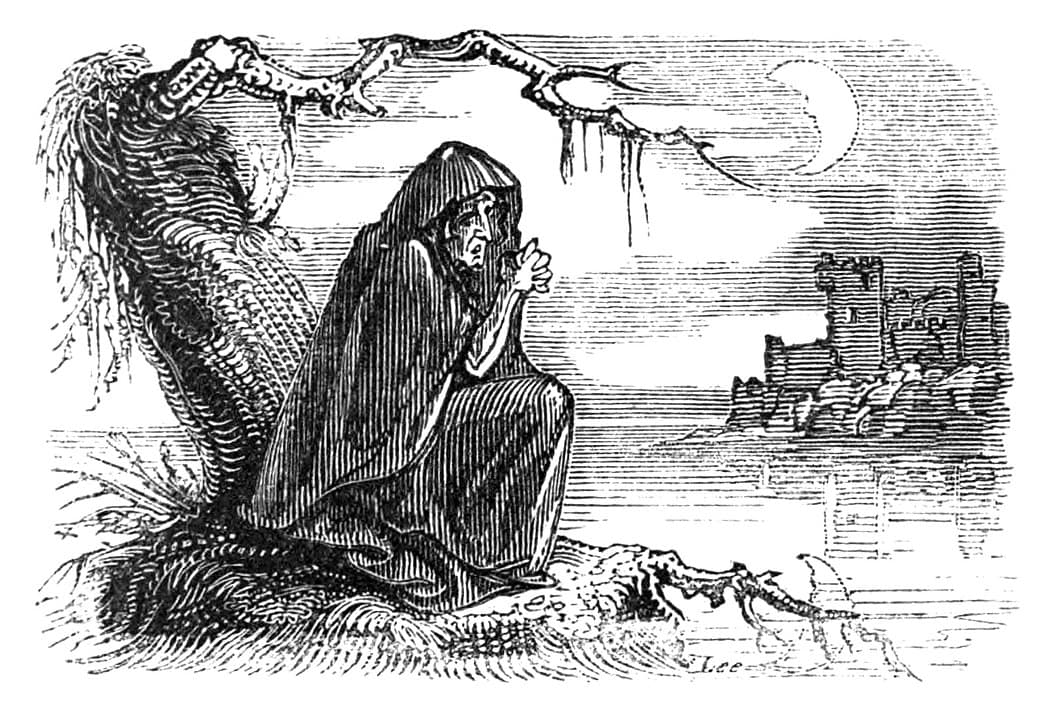
Banshees are always female and never male but that’s one of the few concrete things we know about them. Most other aspects of their very existence are shrouded in mystery and have been since their inception – that’s a big part of why they are so horrifying.
Even a thousand years ago, if you’d ask different people in Ireland or in any of the other Celtic diasporas about what the banshee is, you would have gotten several different answers. There’s no consensus on the banshee myth, which explains all the variations that exist.
One common thread between all these versions is this:
Seeing a banshee in person or even just hearing a banshee’s shriek from a distance means that you or someone close to you is going to die very soon.
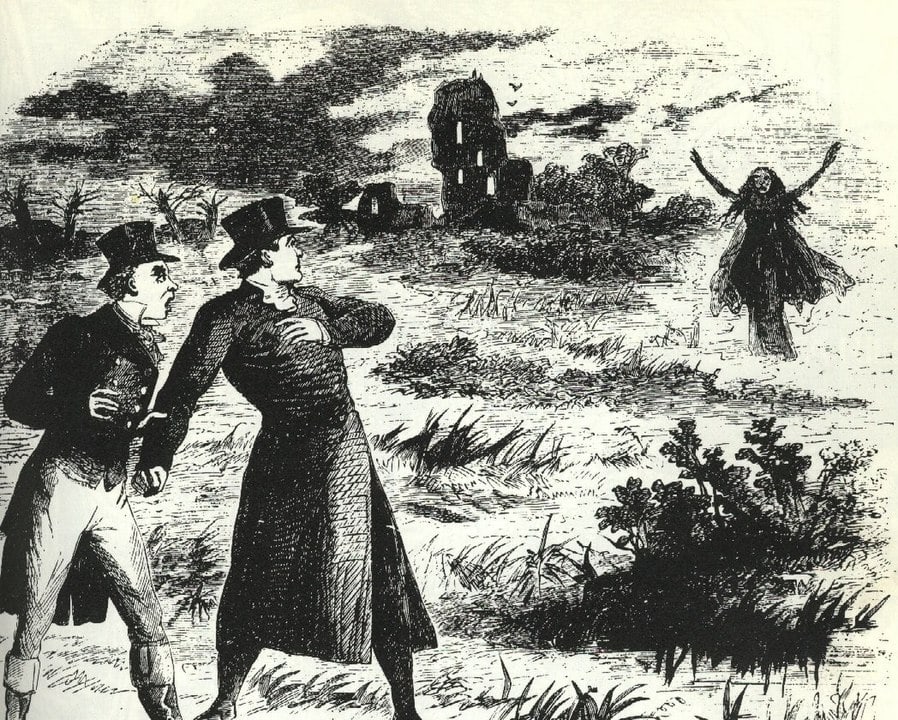
The Banshee’s Many Different Looks
While always a woman, a banshee can look very different. Some say that banshees are always old and crooked, with faces and hands covered in wrinkles and long white hair flowing behind them.
According to other myths, banshees look like middle-aged or even young women. Usually tall and slender with long arms and fingers, these “young banshee” are no less scary than their older variants.
The banshees themselves don’t seem to age, of course – there aren’t any myths about a banshee growing older. Some myths just depict them differently.
All banshees have several identical characteristics, such as their red horrifying eyes, supposedly having this color due to the banshee’s incessant cries. Another thing they have in common is their long, spooky dresses – often patchy and ragged, they are always flowing in the air even when there’s no wind to move them. Many of the older myths explicitly depict the banshee in white but other later myths also portray them in grey or dark clothes – never in color.
Curiously enough, some myths also mention that the banshee could shapeshift too – usually as crows, weasels, or stoats – all animals associated with witches and witchcraft. Most banshee myths portray them as strictly human-like in appearance.
A Ghost, Witch, Fairy, or Something Else Altogether?
The exact nature of the banshee is unclear. They are generally viewed as a spirit and a harbinger of death but whether they are a ghost of a living person, a dark fairy of sorts, a witch, or something different is a matter of dispute.
Some myths suggest that the banshees they are describing are ghosts of women who’ve passed away. Others portray them as “living” witches or witch spirits. More often than not, however, the banshee is regarded as a special type of being in and of itself. A manifestation of destiny, foretelling a dark future.
The Keening Women And The Origin Of The Banshee Myth
The exact origin of the banshee isn’t clear – there isn’t one author or source we can credit with the invention of this myth. However, the connection between the banshees and the old Celtic tradition of keening seems pretty obvious.
Keening is a traditional way of expressing grief in Ireland. The word keen comes from the Gaelic word caoineadh which means to cry or to weep. And that’s exactly what keening women used to do at funerals – to weep and sing funeral songs.
This draws a very direct parallel between keening women and the banshees who themselves were portrayed as old women who cried when close to death. The only difference is that a banshee’s cry would come before someone’s death, either causing or foretelling it, while keening women cried at funerals.
The connection between keening women and banshees is even more clear when you consider that the latter is named after the former – another term people used for keening women centuries ago was bean sidhe, or fairy woman in Gaelic. They were called that because fairies were viewed as more talented singers than people, and all keening women were good singers. And that’s exactly what banshee means too – bean sidhe, a fairy woman.
A Banshee’s Shriek
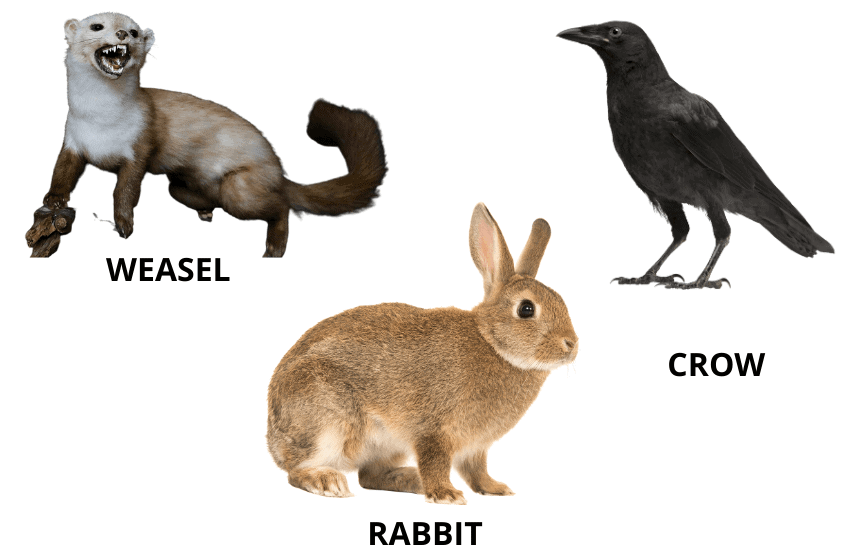
Aside from their spooky appearance, the other most recognizable trait of the banshee is her terrifying shriek. A mix between a cry, a scream, and – sometimes – a song, a banshee’s shriek could be heard from miles away and would terrify even the most hardened person.
The shriek itself didn’t seem to cause any direct harm to those that heard it, however. Unlike other mythological beings, the banshees didn’t paralyze, hypnotize, turn to stone, or kill those they screamed at. Their shrieks were horrifying simply because people knew what followed – death, sometime soon, from a seemingly unrelated cause.
It’s also not clear if the banshees caused the death with their screams or just “announced” it, in a way. People naturally hated them because of what their appearance meant but most myths portray the banshee as a sort of “cosmic messenger”, not the actual cause of the tragic vent.
An interesting parallel can be drawn between the banshee’s scream and the high-pitched screeches of some animals native to Ireland such as foxes, crows, and rabbits. In many cases, both kids and adults would mistake a particularly loud animal scream for that of a banshee, and would flee in terror from something as harmless as a rabbit.
This is even more curious once we factor in that some myths portrayed banshees as capable shapeshifters who could also take the form of a crow or a weasel.
Banshees and the Morrigan
Some people associate the banshee myth with the Morrigan – the Irish trinity goddess of war, death, and fate. This association isn’t widespread and seems to mostly stem from some visual and thematic cues:
- The Morrigan is associated with ravens and the banshees with crows
- The Morrigan is a dark female figure and so are the banshees
- The Morrigan is a goddess of death and fate while banshees prophesy death with their screams
All of these seem mostly coincidental, and there isn’t any direct link between the Morrigan and the banshee myth.
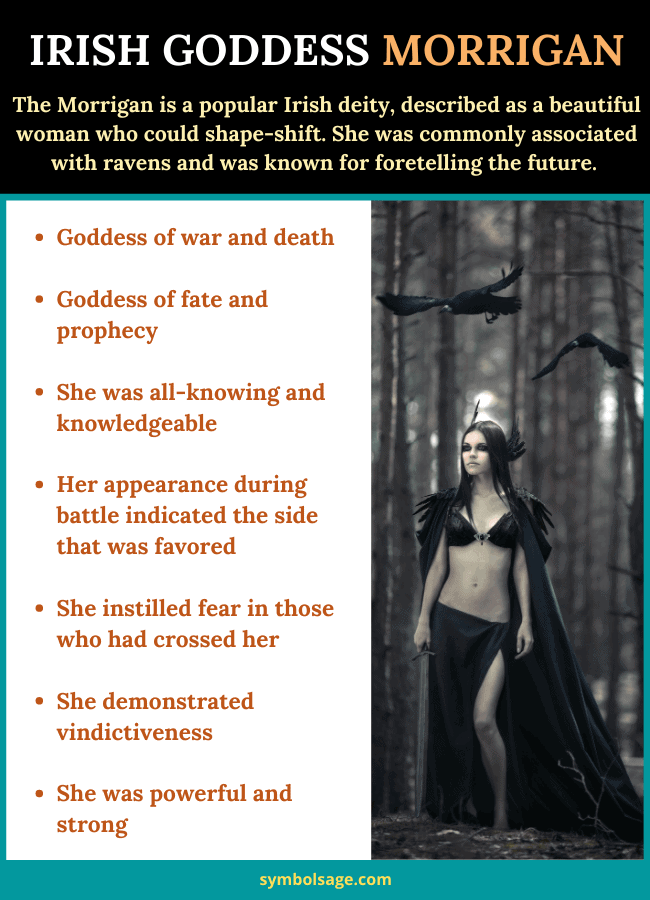
Are Banshees Good or Evil?
Based on everything we’ve covered above it can be a bit unclear as to whether banshees were actually good, bad, or just morally unambiguous. And that answer really depends on the particular myth.
In some myths, the banshees were portrayed as hateful and mad spirits that seemed to actively curse a person or their family. Those myths often show the banshee as the actual cause of the impending disaster. Sometimes there’s an obvious reason for the banshee’s hatred – usually the person or their predecessor wronging the banshee spirit in her previous human life. Other times, the banshees appear hateful just as a part of their nature.
Why people would imagine banshees as evil is pretty clear – no one likes bad news, and we often hate the messenger.
However, many other myths portray the banshees as morally grey or even good. In those myths, the banshee is usually portrayed as a beautiful woman who is genuinely sorrowful about the impending death. The banshee doesn’t cause the death nor does she relish it – she is just a desperately sad observer and a prophetess of what is fated to be.
Meaning and Symbolism of Banshees
The banshee’s symbolism is that of death and sorrow. For many centuries, the banshee myth was a part of all towns and villages in Ireland, and many others across Britain. The appearance of a banshee was always unambiguous – it meant that death was coming soon to claim a loved one.
And given that most villages and communities were tight knit at the time and the average life expectancy wasn’t that great, it’s no surprise that people believed that seeing a shadow in the dark, or hearing a scream in the middle of the night was undoubtedly the cause of a neighbor’s death a week later.
Simply put, the banshee myth is one of the clearest cases of people’s superstition in any culture and religion.
Importance of Banshees in Modern Culture
Banshees have been ever-present in the broader European and American folklore for centuries. They or their variants have been a part of countless works of fiction such as books, comic books, movies, TV shows, animations, songs, video games, and others.
We can’t possibly list all of them but some of the more noteworthy ones include multiple episodes of Scooby-Doo!, the 1999 animated television series Roswell Conspiracies: Aliens, Myths and Legends, the 1959 Disney movie Darby O’Gill and the Little People, and others.
There are also various video games such as Warcraft 3 and World of Warcraft, RuneScape, Puyo Puyo, God of War: Chains of Olympus, Phasmophobia, Final Fantasy, and many others that also include various types of banshee-like creatures.
Marvel’s X-Men comic series also includes a character named Banshee, and DC comics have a similar character called Silver Banshee. There are also TV series such as Charmed, Teen Wolf, Supernatural, the Chilling Adventures of Sabrina, and many others that also include banshees.
Wrapping Up
Even today, the banshee myth is well-known, a predecessor to many horror tales. The image of a woman dressed in white, wandering the forests with long flowing hair, has existed in cultures for millennia, and of these, the banshee remains one of the most popular.








